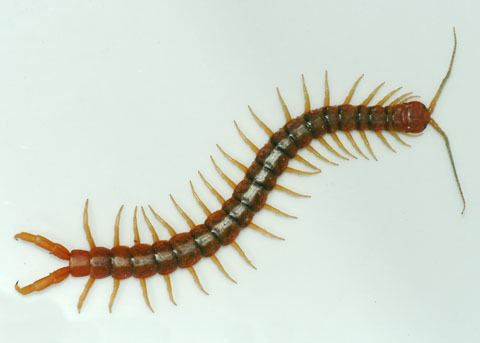Subphylum Myriapoda | Order Scolopendromorpha Scientific name Scolopendra Rank Genus | |
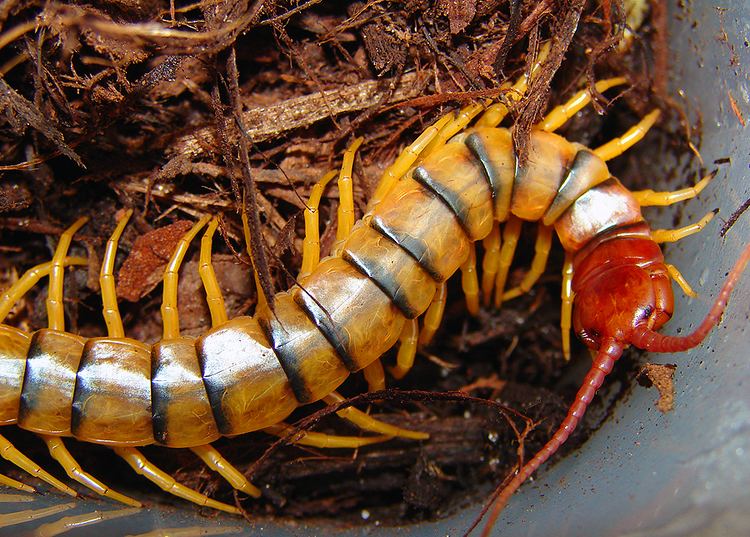 | ||
Lower classifications Scolopendra gigantea, Scolopendra cingulata, Chinese red‑headed centipede, Scolopendra morsitans, Scolopendra alternans | ||
Scolopendra (through Latin from Greek σκολόπενδρα, skolopendra) is a species-rich genus of often very large centipedes of the family Scolopendridae.
Contents
- Live feeding giant centipede scolopendra subspinipes
- Description
- Ecology and venom
- Taxonomic history
- Species
- References
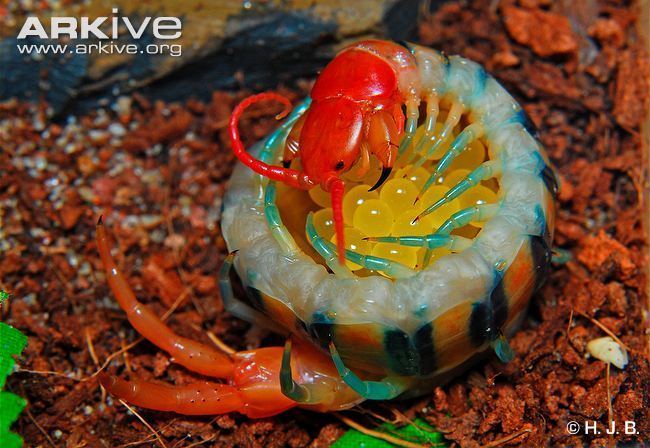
Live feeding giant centipede scolopendra subspinipes
Description
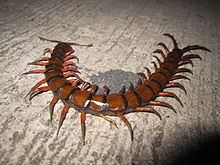
Scolopendra are very large centipedes, with all species capable of reaching at least 10 cm (3.9 in) in length. In temperate climates, species are typically small to medium sized, though almost always still the largest centipedes in their respective habitats. Species from the tropics may reach 20 cm (7.9 in) to 30 cm (12 in) or more, and are the largest living centipedes One southeast Asian species, S. cataracta, is amphibious, and swims and walks underwater.
Ecology and venom
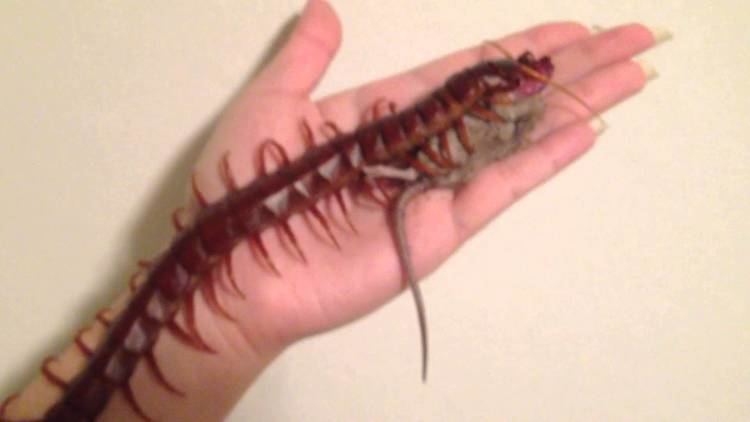
They are active predators, taking prey as large as rodents and even bats, but also small insects such as the stingless bee species Tetragonula iridipennis. Their bites are very painful, but are rarely fatal in humans. The venom is delivered through the animal's forcipules, which lie just behind the mandibles. The venoms of Scolopendra species contain compounds such as serotonin, haemolytic phospholipase A, a cardiotoxic protein, and a cytolysin.
Taxonomic history
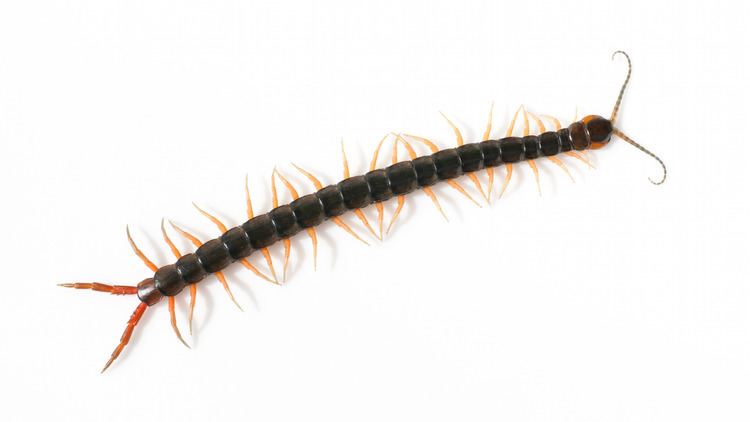
Scolopendra was one of the genera created by Carl Linnaeus in his 1758 10th edition of Systema Naturae, the starting point for zoological nomenclature. Only two of the species originally assigned to the genus remain so: Scolopendra gigantea and S. morsitans; the latter was chosen to be the type species by Opinion 454 of the International Commission on Zoological Nomenclature, overruling a previous designation by Pierre André Latreille, in which he chose Linnaeus' Scolopendra forficata (now Lithobius forficatus) as the type species.
Species
The genus Scolopendra contains these species:
